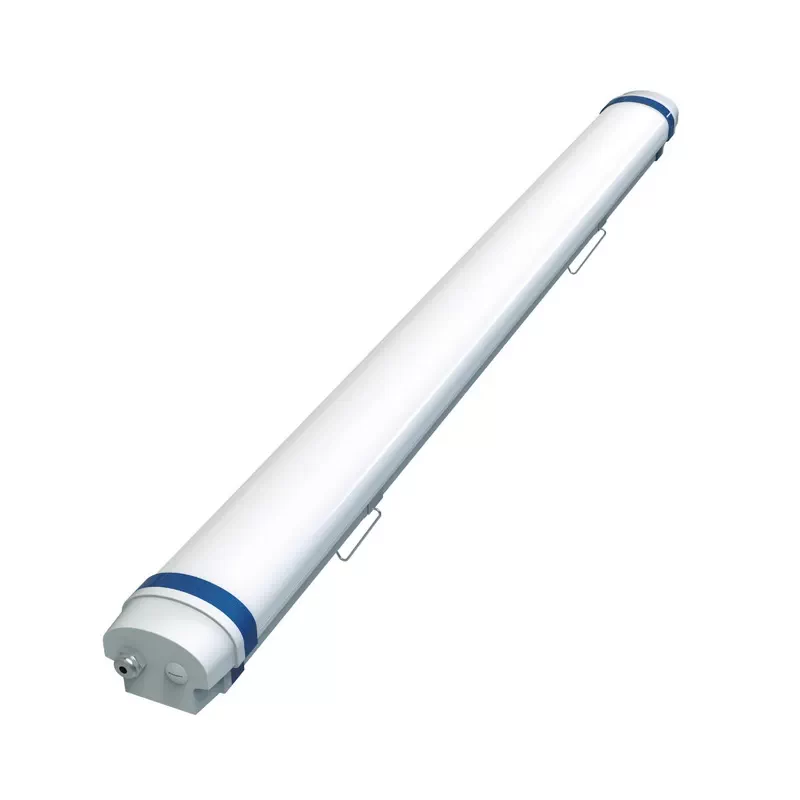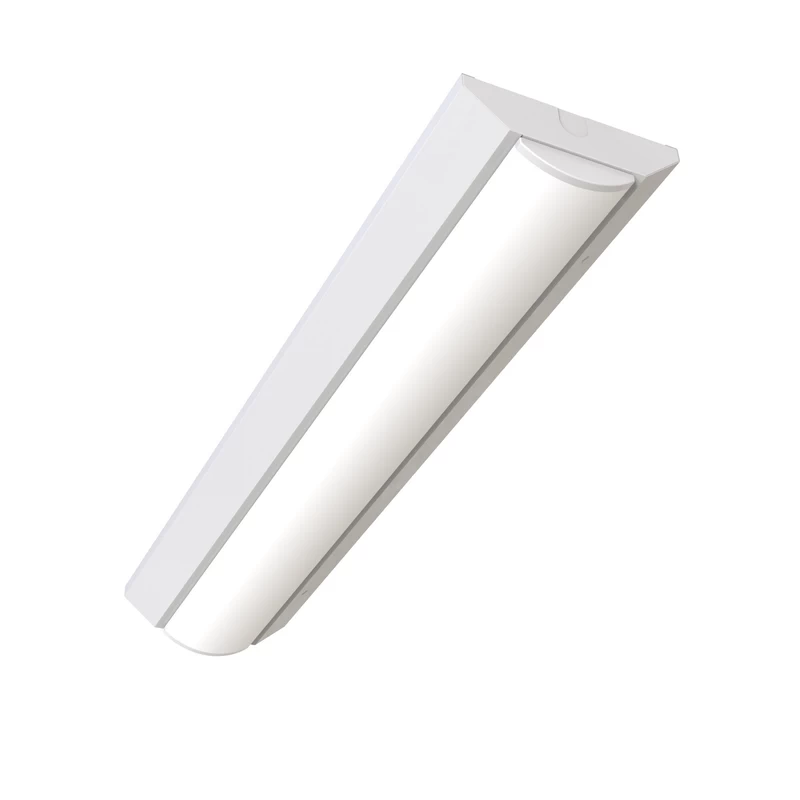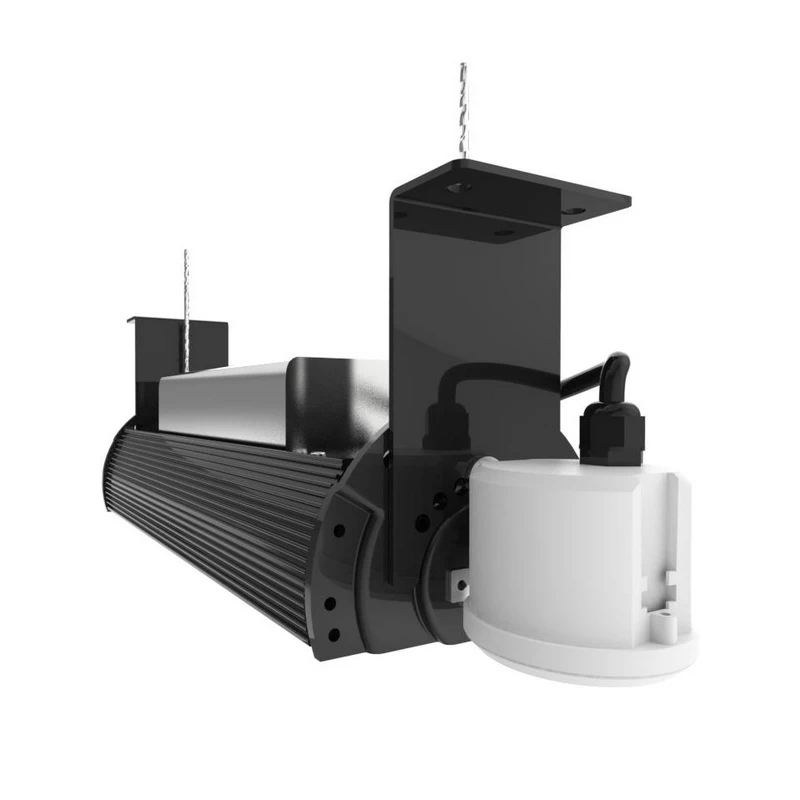Qual è la differenza tra illuminazione a LED SMD e COB? | LedRhythm
1. Introduzione all'illuminazione a LED: Confronto tra SMD e COB
Il rapido sviluppo di Tecnologia LED ha cambiato il settore dell'illuminazione in tutto il mondo. Sia per residenziale, industriale, o all'aperto applicazioni, l'illuminazione a LED offre numerosi vantaggi rispetto alle soluzioni di illuminazione tradizionali. Tra le tecnologie LED più utilizzate vi sono LED SMD (LED per dispositivi a montaggio superficiale) e LED COB (LED Chip-on-Board).
In questo articolo esploreremo le differenze principali tra LED SMD vs illuminazione COB, concentrandosi sulle caratteristiche, i vantaggi e gli usi unici di entrambi. Dall'efficienza energetica alla resa luminosa, la comprensione delle differenze tra i due tipi di lampade è fondamentale. Illuminazione LED COB e Illuminazione LED SMD vi aiuterà a fare scelte consapevoli per il vostro prossimo progetto di illuminazione.
Argomenti principali trattati:
-
Cosa sono le perle per lampade a LED?
-
Quali sono le diverse categorie di LED?
-
Quali sono i vantaggi delle lampade a LED rispetto alle lampade tradizionali?
-
COB vs SMD: il confronto definitivo
-
Qual è la luminosità dei LED COB rispetto a quelli SMD?
-
Installazione e consumo energetico: Strisce LED COB vs SMD
-
Applicazioni dell'illuminazione COB vs. SMD
In questo articolo si farà riferimento a Luci LED COB, Strisce LED COB, Luci LED SMDe altro ancora, rendendo più facile l'identificazione della tecnologia più adatta alle vostre esigenze.
2. Cosa sono le perle per lampade a LED?
Prima di addentrarci nelle specifiche di LED SMD vs LED COBè importante capire innanzitutto cosa Perline per lampade a LED sono.
Perline per lampade a LED sono i piccoli elementi che emettono luce all'interno di un Chip LED che producono luce quando l'elettricità li attraversa. La sfera è il cuore dell'unità LED e converte l'energia elettrica in luce attraverso un materiale semiconduttore.
Perché le perle delle lampade a LED sono importanti?
Le lampade a LED sono parte integrante dell'efficienza e delle prestazioni dei sistemi di illuminazione. Il loro sviluppo ha permesso all'illuminazione di diventare:
-
Più efficiente dal punto di vista energetico: Lampade a LED consumano molta meno energia rispetto all'illuminazione tradizionale.
-
Più duraturo: Con una durata di vita operativa fino a 50.000 oreLa durata di vita di queste lampadine è di gran lunga superiore a quella delle lampadine a incandescenza.
-
Più piccolo e più versatile: Le perle della lampada a LED sono disponibili in varie dimensioni, consentendo una certa flessibilità nel design.
3. Quali sono le categorie di LED?
Comprendere le categorie di LED aiuta a chiarire la distinzione tra LED SMD e LED COB tecnologie.
3.1 Classificazione dei colori
I LED possono emettere diversi colori, tra cui:
-
Luce bianca (più comunemente usato)
-
Luce rossa, blu, verde e gialla
Ciascun colore è prodotto da uno specifico materiale semiconduttore, che rende LED versatile in molte applicazioni illuminotecniche diverse.
3.2 Caratteristiche dell'imballaggio
I LED sono tipicamente incapsulati in:
-
Incapsulamento epossidico completo
-
Incapsulamento epossidico a base metallica
-
Incapsulamento a base di ceramica
-
Incapsulamento del vetro
Questi tipi di imballaggio proteggono il chip LED e migliorano la dissipazione del calore, che è cruciale per Luci LED COB a causa della loro elevata potenza termica.
3.3 Tipo di pacchetto
Esistono diversi tipi di pacchetti:
-
LED a innesto diretto
-
LED SMD (Surface-Mounted Device)
-
LED COB (Chip-on-Board)
-
Pacchetto RGB
Ogni tipo di pacchetto presenta vantaggi unici in termini di flessibilità di progettazione, emissione luminosa e costo. LED SMD sono comunemente utilizzati per illuminazione su piccola scala, mentre LED COB sono ideali per le applicazioni ad alta intensità proiettori e applicazioni industriali.
4. Quali sono i vantaggi delle lampade a LED rispetto alle lampade tradizionali?
L'illuminazione a LED ha fatto notevoli passi avanti rispetto alle tecnologie di illuminazione tradizionali, come ad esempio lampadine a incandescenza e lampade fluorescenti. Ecco come Luci a LED rispetto alle lampade tradizionali:
| Caratteristica | Illuminazione a LED | Lampade tradizionali |
|---|---|---|
| Impatto ambientale | Non tossico e conforme alla normativa RoHS | Contiene elementi tossici come il mercurio |
| Efficienza energetica | Fino a 80% più efficienti dal punto di vista energetico | Bassa efficienza |
| Durata della vita | Oltre 50.000 ore | 2.000-3.000 ore |
| Tempo di risposta | Luminosità istantanea | Richiede tempo per raggiungere la massima luminosità |
| Temperatura di esercizio | Può funzionare da -40°C a 105°C | Difficoltà di funzionamento a basse temperature |
| Controllo intelligente | Supporta DALI, DMX512, ecc. | Nessuna opzione di controllo intelligente |
| Rumore | Rumore molto basso dall'alimentazione | Rumore di commutazione ad alta frequenza |
| Sfarfallio | Nessun sfarfallio | Sfarfallio a 50/60Hz |
LED sono nettamente superiori sotto quasi tutti gli aspetti, e questo li rende la soluzione illuminotecnica preferita in diversi settori, da illuminazione domestica a illuminazione industriale.
5. Che cos'è un LED COB?
LED COB sono una forma avanzata di tecnologia LED. A differenza dei tradizionali LED SMD, LED COB sono caratterizzati da più chip LED montati direttamente su un unico substrato. Questo design consente una migliore dissipazione del calore e un'emissione luminosa di maggiore intensità.
Caratteristiche principali dei LED COB:
-
Alta efficienza luminosa: Illuminazione LED COB produce più luce a parità di potenza rispetto a LED SMD.
-
Migliore gestione del calore: Perché LED COB I chip sono montati direttamente sul substrato e possono dissipare il calore in modo più efficace.
-
Emissione luminosa uniforme: LED COB producono una luce più omogenea e uniforme, che li rende ideali per le applicazioni in cui è richiesta una luminosità costante, come ad esempio in proiettori e Illuminazione ad alta intensità di luce.
Esplora le soluzioni di illuminazione LED COB su LedRhythm
6. Che cos'è un LED SMD?
LED SMD (Dispositivi montati a superficie) sono più piccoli di LED COB e sono montati direttamente sulla superficie di un circuito stampato. LED SMD sono altamente versatili e possono essere utilizzati in un'ampia gamma di prodotti, da Strisce LED a luci a soffitto.
Caratteristiche principali dei LED SMD:
-
Più piccolo e più flessibile: LED SMD sono compatti e quindi adatti ad applicazioni che richiedono fattori di forma ridotti.
-
Consumo di energia ridotto: In generale, LED SMD consumano meno energia di LED COB ma producono meno luce.
-
Economicamente vantaggioso: Il processo di produzione di LED SMD è più semplice, il che li rende meno costosi rispetto a LED COB.
Guarda i prodotti LED SMD su LedRhythm
7. Vantaggi e svantaggi dei LED SMD e COB
7.1 Vantaggi dei LED COB:
-
Maggiore efficienza luminosa: Alla stessa potenza, LED COB sono fino a 10% più efficienti rispetto a LED SMD.
-
Emissione luminosa uniforme: LED COB producono una luce omogenea e costante, ideale per applicazioni di illuminazione di alta qualità.
-
Migliore gestione del calore: La progettazione integrata di LED COB consente una dissipazione del calore superiore.
7.2 Svantaggi dei LED COB:
-
Maggiore concentrazione di calore: Mentre LED COB dissipano meglio il calore, ma necessitano comunque di sistemi di raffreddamento adeguati, soprattutto in ad alta potenza applicazioni.
-
Costo: Grazie al loro processo di produzione avanzato, LED COB tendono ad essere più costosi di LED SMD.
7.3 Vantaggi dei LED SMD:
-
Design flessibile: LED SMD sono compatti e facili da incorporare in diversi progetti, come ad esempio Strisce LED e luci a soffitto.
-
Economicamente vantaggioso: LED SMD hanno un processo di produzione più semplice, il che li rende un'opzione più economica rispetto a LED COB.
-
Basso consumo energetico: LED SMD consumano meno energia, rendendoli ideali per applicazioni di dimensioni ridotte, quali illuminazione decorativa.
7.4 Svantaggi dei LED SMD:
-
Efficienza luminosa inferiore: LED SMD sono generalmente meno efficienti di LED COBproducendo meno luce a parità di potenza.
-
Gestione del calore: LED SMD sono più inclini al surriscaldamento, soprattutto se utilizzati in applicazioni ad alta potenza.
| Tipo di confezione | LED SMD | LED COB |
|---|---|---|
| Dissipazione del calore | Bassa dissipazione di calore | Elevati requisiti di dissipazione del calore |
| Efficienza luminosa | Alto, ma inferiore a COB | 10% maggiore efficienza a parità di potenza |
| Qualità della luce | Emissione luminosa meno uniforme | Emissione luminosa più uniforme |
| Costo | Costo inferiore | Costi più elevati a causa della produzione avanzata |
| Applicazione | Versatile per le applicazioni più piccole | Ideale per l'illuminazione ad alto rendimento e su larga scala |
8. A cosa serve la luce COB?
Luci COB sono comunemente utilizzati per:
-
Illuminazione con proiettori: Fornisce una luce brillante e uniforme su ampie superfici.
-
Illuminazione a campata alta: Utilizzato in fabbriche, magazzini e palestre dove è necessaria un'illuminazione ad alta intensità.
-
Illuminazione per autoveicoli: LED COB sono spesso utilizzati nei fari grazie alla loro elevata resa luminosa.
9. A cosa serve la luce SMD?
Luci SMD sono perfetti per:
-
Illuminazione decorativa: Strisce LED SMD sono comunemente utilizzati per l'illuminazione interna di case e uffici.
-
Sistemi di illuminazione flessibili: LED SMD possono essere utilizzati in un'ampia gamma di configurazioni, da luci a soffitto a illuminazione di servizio.
-
Retroilluminazione: LED SMD sono spesso utilizzati nei televisori, negli schermi dei computer e in altri display elettronici.
10. Quanto è più luminoso il COB rispetto all'SMD?
In media, LED COB forniscono fino a 10% di efficienza luminosa in più rispetto a LED SMD a parità di potenza.
| Tipo di LED | Efficienza luminosa (LM/W) | Luminosità |
|---|---|---|
| LED SMD | 80-100 LM/W | Luminosità moderata |
| LED COB | 90-120 LM/W | Maggiore luminosità |
11. Le strisce luminose COB e SMD sono installate nello stesso modo?
Entrambi Strisce LED COB e Strisce LED SMD sono installati in modo simile, ma Strisce COB richiedono una manipolazione accurata a causa della loro maggiore potenza termica.
12. Quanta energia consumano le strisce LED COB rispetto alle strisce LED SMD?
Strisce LED COB in genere consumano più energia a causa della loro maggiore potenza luminosa. Tuttavia, sono più efficienti nel fornire una luce più luminosa rispetto a Strisce LED SMD.
| Tipo di striscia LED | Consumo di potenza (W/m) | Efficienza energetica |
|---|---|---|
| Striscia LED COB | 15-20 W/m | Alta efficienza |
| Striscia LED SMD | 10-15 W/m | Efficienza moderata |
13. Quali sono i punti di taglio delle strisce LED COB?
Strisce LED COB in genere hanno punti di taglio ogni Da 3 a 5 LEDche consente di personalizzare la lunghezza della striscia.
14. Quali sono i punti di taglio delle strisce LED SMD?
Strisce LED SMD hanno anche dei punti di taglio designati, in genere ad ogni 3-5 chip LEDche li rende flessibili per l'installazione in vari spazi.
15. Riassumete la situazione SMD e COB della serie di prodotti LedRhythm.
LedRhythm offre una vasta gamma di prodotti che incorporano sia SMD e LED COB. La maggior parte dei chip utilizzati nei loro prodotti sono LED SMDprogettati per applicazioni di illuminazione ad alta efficienza energetica. Tuttavia, LED COB sono utilizzati in ad alta potenza e illuminazione industriale prodotti, come luci a campata alta e proiettori.
Per una panoramica completa dell'offerta di prodotti LedRhythm, esplorate la sezione Catalogo dei prodotti LedRhythm.
Conclusione
Quando si tratta di Illuminazione a LED, entrambi LED COB e LED SMD offrono vantaggi unici a seconda dell'applicazione. LED COB sono eccellenti per l'illuminazione uniforme e ad alto rendimento, il che li rende ideali per l'uso commerciale e industriale. D'altra parte, LED SMD sono versatili, economici e adatti alle applicazioni più piccole.
Per ulteriori approfondimenti su LED SMD vs illuminazione COB e per esplorare l'offerta di prodotti di LedRhythm, visitate il nostro sito web pagina delle notizie.








